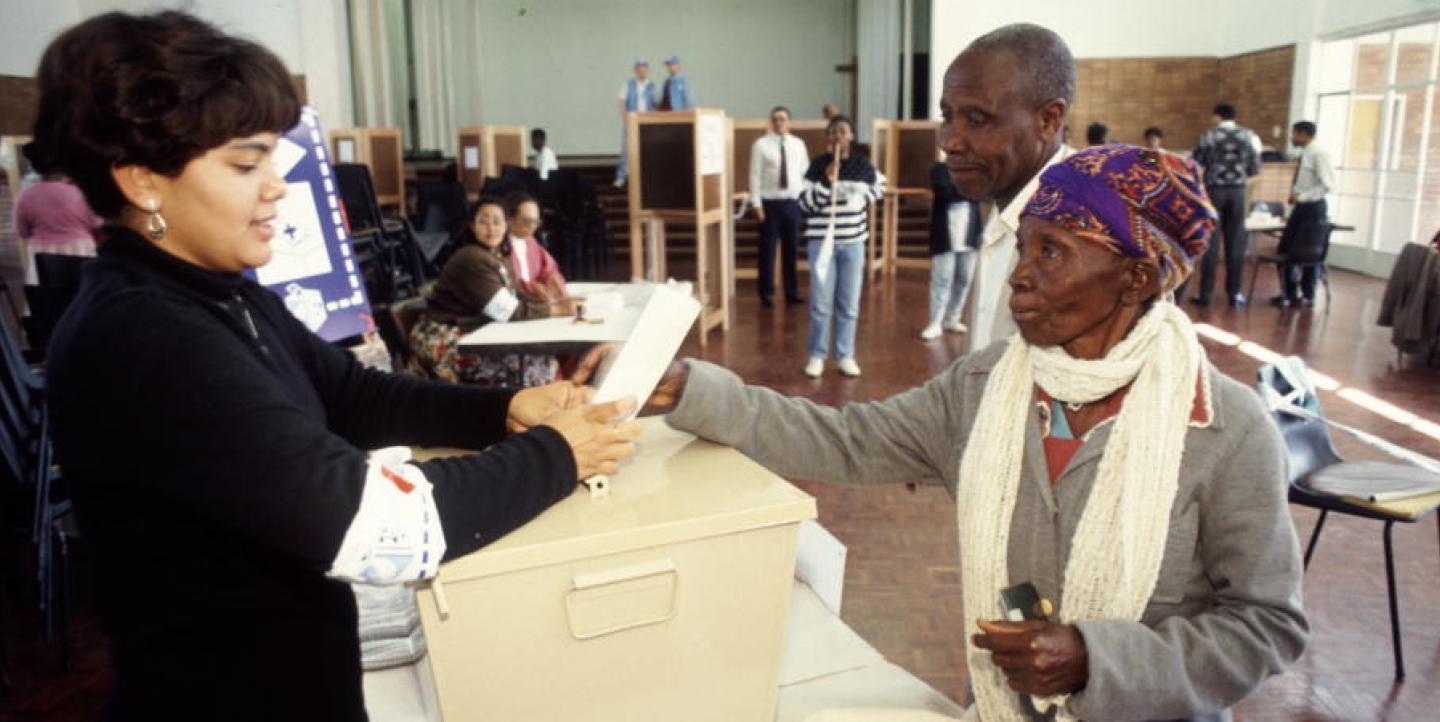Black smoke churned toward the sky in Nyanga, one of the oldest townships in Cape Town, after protestors set fire to buses there in early September. Across the country, in Soweto near Johannesburg, a group of citizens--most of them children--face off against police over housing issues.
A police report shows that violent protests have doubled in the country, while an academic report reveals that the number of people killed in insurrections has increased sharply. Protests are an ongoing feature of life in South Africa, but news reports on this frequent occurrence are largely superficial. They deal with descriptions of running battles with police, deaths and injury statistics. Journalists rarely delve more deeply into the reasons why communities engage in these violent protests.
That’s because journalism skills have been decimated as the ranks of newsroom reporters decline sharply in the country, according to William Bird, Director of Media Monitoring Africa (MMA). “Given the lack of resources, news is focused on big political personalities, and issues aren’t being unpacked,” he told IJNet in an interview. “When it comes to service delivery protests, context is given shorthand, so there’s been very little depth to the reporting on this issue.”
MMA, a winner in the African News Innovation Contest organized by the African Media Initiative (AMI), was preparing for the elections during the first quarter of 2014, which meant looking for ways that the nonprofit organization could support journalists limited by tight resources. “We were looking for a way that journalists could easily add a lot of data and depth to their stories by making this information accessible and easy to use,” he said.
“We wanted to mash the election results with census results and other data so that journalists could have easy access to information about basic services, income levels, service levels, and other key information that would offer real insight into why people protest and what they’re protesting about,” he said.
That was easier said than done, since much of South Africa’s publicly available data sits trapped in lengthy reports, in inaccessible formats that do little to help journalists keep the electorate informed on civic matters that directly affect them.
That’s why Bird turned to Code for South Africa, a nonprofit that builds a more active citizenry by promoting the availability of data. Code for South Africa was established with a grant from the African Media Initiative's Code for Africa program.
Code for South Africa knew that a tool like the one Bird was envisioning was already in development, but for a different country. The Knight News Challenge-funded Census Reporter project was pulling data from the U.S. census and putting it into a simple and easy-to-use interface that includes data visualizations. The goal: to build a journalist-friendly tool that would offer rich, deep context at a glance.
Census Reporter was built completely using open source software which meant that Code for South Africa could use the platform’s underlying code at no cost, and build on top of it, in order to adapt the tool so that it could be used for South African state datasets.
The result: Code for South Africa lead technologist Greg Kempe led a team that built WaziMap.co.za, which launched in May 2014. Wazi is the local isiZulu word for “knowledge,” and means “open” in East Africa’s kiSwahili language.
The African version of the platform included a streamlined data backend that matches the data interface (called an application programme interface, or API) of the CensusReporter API backend but doesn’t have all the complexities of the US Census. Wazi therefore supports a much simpler data format that makes it easy to also import non-census information, such as crime or education statistics, and still get all the benefits of CensusReporter’s original technology. The big benefits include more options for map visualization and geo-coded downloads. Code for South Africa also simplified the mapping layer so that it can be run off Open Street Map instead of a custom mapping server.
Census information is tough to access and interpret at the best of times, but Wazi Map takes the headache out of trawling through streams of data or legions of excel files when news staffers are on deadline. “By going to Wazi Map, journalists can contextualize their stories to find out what’s behind a violent protest or whether a community has water, or what the education levels of a community are,” Kempe said. “Alternately, journalists can take the information and embed it into the stories or use the data visualisations, so readers can view the data at a quick glance.”
“We’re now working with journalists to show them how to use this tool, and to get feedback on their experiences when using it. We’re also looking to plug a lot more information into the site so that the tool becomes more and more useful,” Kempe said.
“What we do is take data and package it in a way that citizens can use so that they can make better decisions,” said Adi Eyal, a director at Code for South Africa. “The goal of Wazi is to contextualize a place using as much data as possible – information like the census, crime statistics, the efficacy of hospitals and more.”
Feedback from newsrooms has been so good that Code for South Africa has been commissioned to build similar versions for Kenya (where a prototype is already in public testing), Ghana and Nigeria.
The end result, Eyal hopes, is that people will be empowered to make informed choices about what matters, from “decisions about which medicines to buy, to who they should vote for, or what suburb they should live in.”
Related reading:
Census Reporter is ‘an evangelical tool to make journalists want to use data’
CodeCamp: Helping Media and Government Become Data-Driven
Image CC-licensed on Flickr via United Nations Photo.
Global media innovation content related to the projects and partners of the Knight Fellowships on IJNet is supported by the John S. and James L. Knight Foundation and edited by Jennifer Dorroh.

